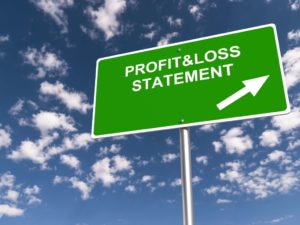Financial Ratios Complete List and Guide to All Financial Ratios

Bear in mind, the company can still have problems even if this is the case. But, if the receivables turnover is way above the industry’s, then the firm’s credit policy may be too restrictive. Company information is available in many places, including news and financial publications and websites. However, to be sure of its credibility, look for financial information in audited company annual reports.
- Financial ratios can also help to determine if the financial resources are over- or under-utilized.
- But before we understand the cash conversion cycle, let’s know a small basic.
- Hence in terms of business set-up, Mumbai will be a better option to go for.
- Companies can also use ratios to see if there is a trend in financial performance.
- Within this period (446.44 days) the company is able to manufacture and sell its products and collect cash from customers.
- It will also be regularly used by successful candidates in their future careers.
- There is nothing particularly remarkable about the inventory turnover ratio, but the fixed asset turnover ratio is remarkable.
Here it is assumed that this money (equivalent to current liability) either stays idle in the company’s bank account or locked in short-term instruments. They are just waiting to be paid to the suppliers, bills, salaries, etc. It is different from gross profit because some additional expenses are considered here. Expenses like depreciation, selling & administrative expense, other expense are considered to compute operating profit. Generally speaking, gross margin is a characteristic of a sector as a whole.
Analyzing the Debt Management Ratios
Financial ratios can also help to determine if the financial resources are over- or under-utilized. Financial statements often contain a large set of numbers, disclosures, and other information for stakeholders. While a trend report may be able to show if the current financial statements contain data that is increasing or decreasing, a lack of benchmarks may be found here. The ratio analysis report presents benchmarks that demonstrate if specific parts of a company are better or worse off than a previous time period. Investors often use ratios to assess a company’s financial strength.
Ratio analysis is the analysis of financial information found in a company’s financial statements. Such analysis can shed light on financial aspects that include risk, reward (profitability), solvency, and how well a company operates. As a tool for investors, ratio analysis can simplify the process of comparing the financial information of multiple companies. Ratio analysis is a cornerstone of fundamental equity analysis.
Ratio Analysis – Categories of Financial Ratios
Decreasing ratios can indicate financial difficulties unless a company changes its operations to more profitable ventures. When investors wish to compare the financial performance of different companies, a highly valuable tool at their disposal is ratio analysis. Ratio analysis can provide insight into companies’ relative financial health and future prospects. It can yield data about profitability, liquidity, earnings, extended viability, and more. The results of such comparisons can mean more powerful decision-making when it comes to selecting companies in which to invest. Investors and analysts employ ratio analysis to evaluate the financial health of companies by scrutinizing past and current financial statements.
Return on Equity is increasing from 2020 to 2021, which will make investors happy. As an investor, we can check if the company is nearing its bankruptcy threat. We can do it using a financial ratio called the interest coverage ratio. It is a measure of the company’s ability to pay at least the interest portion of its loan dues.
What Are the Types of Ratio Analysis?
Asset vs profit analysis of several business alternatives will give good insights. You will buy/lease a land, set-up plant and equipments & furnitures, hire people etc. You are setting up an asset base of the company which in turn will produce and render goods and services for the customers. These goods and services in turn will yield sales and net profit.

It looks at how many times a company’s operating profits exceed its interest payable. The higher the figure, the more likely a company is to be able to meet its interest payments. Anything in excess of three is usually considered to be safe. A large ratio analysis report of a company proportion of borrowed capital is risky as interest and capital repayments are legal obligations and must be met if the company is to avoid insolvency. The payment of an annual equity dividend on the other hand is not a legal obligation.
